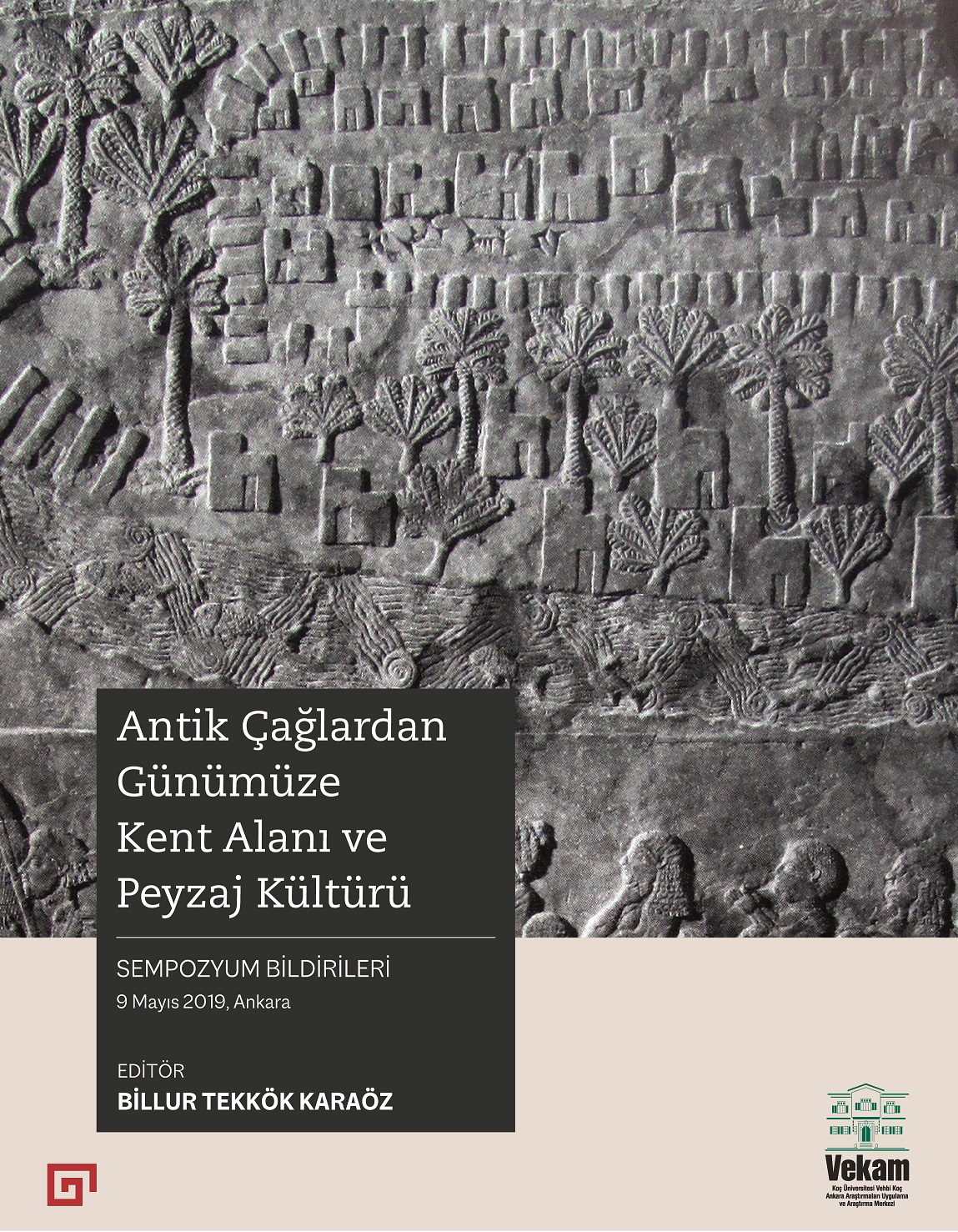
| Editor: | Billur Tekkök Karaöz |
| Language: | Turkish |
| Publisher: | Koç University |
| Place of Publication: | Ankara |
| Categories: | Art history, Urban history |
| Publication Year: | 2022 |
| Page: | 212 |
| Size: | 19,5 x 25 cm. |
| ISBN: | 978-625-8022-12-4 |
[The Culture of the Urban Area and the Landscape from Antiquity to the Present]
This book is a compilation of the papers presented at the symposium “From Ancient Times to Present: Urban Space and Culture of Landscape,” organized by Koç University VEKAM on May 9, 2019.
This publication covers the settlement areas selected during the urbanization process that has been experienced since the 3rd millennium BC in Anatolia, Mesopotamia, and Egypt, the fertile lands with residential properties, and the use of water and natural resources. The practice of bringing garden plants from other regions and planting them at times of military expeditions and the role of this in the administration propaganda of cultures are also discussed. The administration of the house (domus), which harbors life and production together in Roman culture, how it was managed as a multi-value building, how it documented class, and how it contributed to art are also examined.
Other topics covered by the publication include the management of agricultural lands, the cultivation of fruit and vegetables in line with the increasing population after Constantinople was made the capital of Eastern Roman Empire, newly discovered wine workshops in Mavrucandere and the Karlık village near Ürgüp with terraces used as vineyards until the early 20th century, as well as the cultivation of special plants and medicinal herb gardens for the manufacture of medication, supervised by the church in the Middle Ages.
The publication also examines the Ottoman-era garden culture through the accounts of foreign travelers, foundation records, and literary sources, and provides examples of oil-paint landscapes and still-life paintings from palace mansions and bourgeois houses after the 18th century. The book examines how changes in the Tulip Era palace architecture impacted the garden, and it also discusses landscaping elements in the design of 19th-century Ottoman palace gardens, and the cultivation and acclimatizing of new, exotic, evergreen flowering plants in the gardens.
In the publication, the role of landscape in the zoning activities and the shaping of the cultural landscape in Ankara during the Republican period was traced from the mental map of city dwellers who experienced this transformation from the 1940s to the 1960s.
It is aimed that the book will be an important reference source for researchers working on urban landscape issues.
